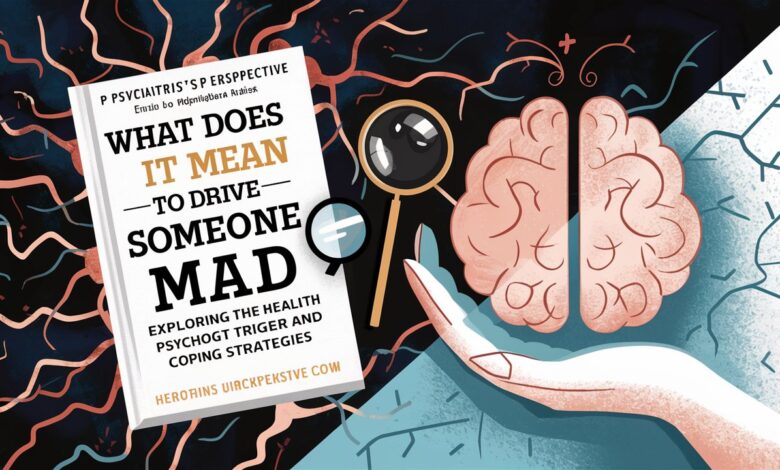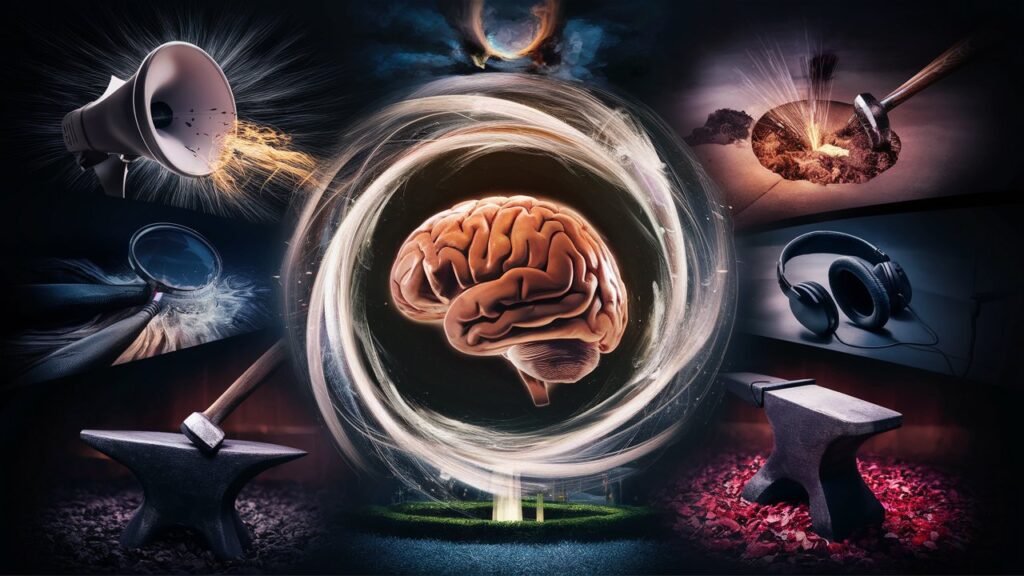
Introduction: The Thin Line Between Annoyance and Madness
We’ve all experienced moments when someone’s behavior, a repetitive noise, or a frustrating situation pushes us to the brink of exasperation. The phrase “drive mad” isn’t just a hyperbolic expression—it reflects a very real psychological response to stressors that disrupt our emotional equilibrium. But what does it truly mean to “drive someone mad”? This article delves into the psychology behind irritation, the common triggers that escalate emotions, and actionable strategies to cope with or avoid reaching that breaking point. By understanding the mechanics of frustration, we can better navigate relationships, workplaces, and daily challenges without losing our cool.
1. The Psychology of Being “Driven Mad”: How the Brain Reacts to Frustration
The sensation of being “driven mad” stems from the brain’s limbic system, particularly the amygdala, which processes emotions like anger and fear. When faced with persistent annoyances, the amygdala triggers a fight-or-flight response, releasing stress hormones like cortisol and adrenaline. Over time, repeated exposure to irritants can lead to chronic stress, impairing cognitive functions such as decision-making and emotional regulation. Psychologists attribute this reaction to a perceived loss of control—when individuals feel unable to escape or resolve a frustrating situation, their frustration amplifies. Understanding this biological and psychological interplay helps explain why seemingly minor triggers, like a dripping faucet or a colleague’s interruptions, can provoke disproportionate anger.
2. Common Triggers That Drive People Mad: From Pet Peeves to Emotional Overload
Certain triggers are universally notorious for testing patience. Repetitive behaviors, such as pen-clicking, loud chewing, or constant interruptions, often top the list due to their invasive nature. Passive-aggressive communication, like sarcastic remarks or intentional silence, can also fuel resentment by creating emotional ambiguity. Environmental factors, such as cluttered spaces or relentless noise pollution, contribute to sensory overload. On a deeper level, unmet expectations—whether in relationships, work deadlines, or personal goals—can breed frustration when reality clashes with our ideals. These triggers vary by individual, influenced by personality traits, past experiences, and cultural norms, but their cumulative effect often leads to emotional exhaustion.
3. The Role of Communication Breakdown in Escalating Conflict
Poor communication is a catalyst for driving people mad. When conversations lack clarity, empathy, or active listening, misunderstandings fester. For example, vague instructions at work can lead to repeated mistakes, while dismissive responses like “Whatever” or “Calm down” invalidate emotions and escalate tension. Passive-aggressive behavior, such as giving the silent treatment or backhanded compliments, creates a toxic cycle of resentment. Conversely, assertive communication—expressing needs calmly and respectfully—can defuse conflicts. Recognizing communication patterns that trigger frustration is key to breaking the cycle and fostering healthier interactions.

4. Coping Strategies: How to Avoid Being Drivan Mad (or Driving Others Mad)
Managing the urge to “drive mad” requires proactive emotional and behavioral strategies. Emotional regulation techniques, such as deep breathing, mindfulness, or stepping away from a situation, help reset the nervous system. Setting boundaries—like requesting a quieter workspace or establishing clear deadlines—reduces ambiguity and stress. For interpersonal conflicts, practicing empathy by considering others’ perspectives can mitigate irritation. Additionally, environmental adjustments, such as noise-canceling headphones or organizing chaotic spaces, address sensory triggers. On a societal level, fostering patience and open dialogue in workplaces and families creates environments where frustration is less likely to boil over.
5. Long-Term Effects of Chronic Irritation: Why It’s More Than Just a Bad Mood
Persistent frustration isn’t merely a fleeting emotion—it can have serious consequences. Chronic stress from being constantly “driven mad” is linked to health issues like hypertension, anxiety disorders, and weakened immune function. Relationships may suffer due to accumulated resentment, while productivity at work declines amid distraction and negativity. Over time, individuals may develop maladaptive coping mechanisms, such as avoidance or aggression, further isolating them from support systems. Addressing these triggers early through therapy, stress management, or lifestyle changes is crucial to preventing long-term damage.
Conclusion: Mastering Emotional Resilience in a Maddening World
The phrase “drive mad” captures the universal human experience of grappling with frustration. By dissecting its psychological roots, identifying common triggers, and adopting practical coping strategies, we can reclaim control over our emotional responses. Whether it’s refining communication habits, adjusting environments, or practicing mindfulness, small changes can prevent minor annoyances from spiraling into overwhelming stress. Ultimately, fostering empathy—for ourselves and others—builds resilience in navigating life’s inevitable irritations.
Frequently Asked Questions (FAQs)
Q1: Why do small, repetitive actions drive people mad?
A: Repetitive behaviors trigger sensory overload and activate the brain’s threat response, as they signal a lack of control. Over time, this erodes patience and amplifies frustration.
Q2: How can I stop passive-aggressive people from irritating me?
A: Address the behavior calmly and directly (e.g., “I noticed you seemed upset earlier. Can we talk about it?”). Setting boundaries and refusing to engage in ambiguity reduces its power.
Q3: Can chronic frustration lead to mental health issues?
A: Yes. Prolonged stress from unresolved irritation is linked to anxiety, depression, and burnout. Seeking therapy or stress-management techniques is advisable.
Q4: What’s the difference between normal annoyance and being “driven mad”?
A: The latter involves intense, prolonged emotional reactions that impair daily functioning. If frustration disrupts relationships or work, it’s time to seek coping strategies.
Q5: How do cultural differences influence what drives people mad?
A: Cultural norms shape tolerance levels. For example, noise sensitivity might vary between communal vs. individualistic societies, affecting what’s deemed “annoying.”
By exploring these dimensions, we equip ourselves to navigate a world full of potential triggers—without losing our sanity.



